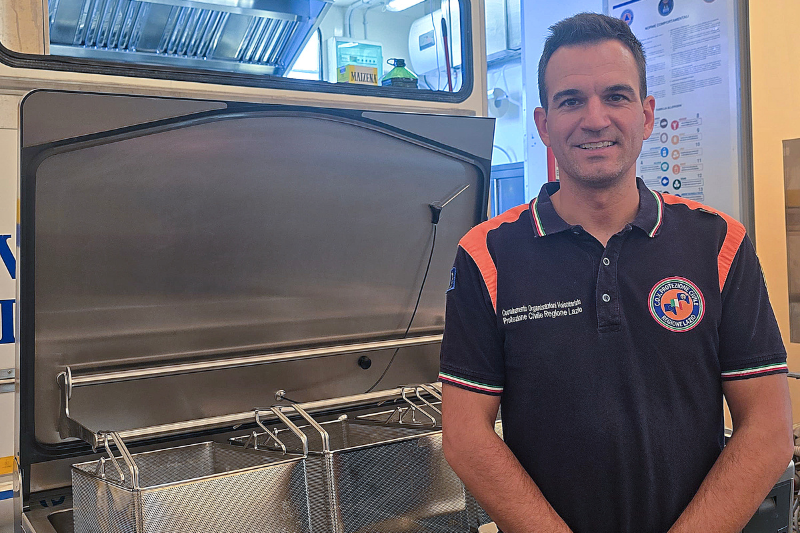Voices from the Jubilee of Youth 2025: The Field Kitchens

In the camp set up within the City of Sport in Tor Vergata, approximately 4,000 rescuers are hosted. The organizational machine provides comfortable resting areas, well-equipped dining halls for meals, and all necessary personal care services each day. In this interview, Andrea discusses a new concept of the "field kitchen," tested for the first time during the Jubilee of Youth.
Tell us about yourself. What motivated you to become a civil protection volunteer?
In life, I am an engineering geologist. I became a civil protection volunteer in 2007, the year I finished high school. I believe that the motivation to become a volunteer comes from within, stemming from a genuine desire to help others. When you watch national emergencies on television, the urge to lend a hand can drive you to join a volunteer organization.
What is your activity for the Jubilee of Youth?
As a civil protection volunteer for the Lazio Region, I am responsible for special projects, including the Jubilee event. This involves setting up an area for the assembly of rescuers, which will provide 4,000 beds and include four dining halls with 800 seats each. Each dining hall has the potential to serve 2,400 meals in three shifts, a setup that had never been tested before. In this context, the Jubilee offers a significant opportunity for civil protection. Unlike emergencies, where time is limited and only established procedures can be followed, this event allows us to plan and execute our actions while making adjustments as needed. For instance, we had the chance to explore an innovative method for the field kitchens that is already being used in the catering industry.
How was this innovative method for field kitchens developed, and what does it involve?
We have collaborated with biologists, professional chefs, and various other experts in the catering industry. They encouraged us to look beyond traditional cooking methods. Typically, camp kitchens are designed to serve a specific number of meals per hour. However, following the earthquake in Central Italy in 2016, there was a significant increase in the number of rescuers after the second tremor at the end of October, which led to a heightened demand for meals. Although we managed to provide cafeteria services, it came with some challenges. To improve our approach, we experimented with a method that involves early preparations and overproduction. This means we prepare a larger quantity of food, quickly cool it down using blast chillers, vacuum seal it, and store it in cold rooms.
In the camp, a dedicated field kitchen is available for individuals with allergies, intolerances, or special dietary needs. When did you first recognize this necessity?
During the 2012 earthquake emergency in Emilia-Romagna, the diverse backgrounds of the affected individuals highlighted the necessity for providing various types of meals. Specifically, at the camp in San Possidonio, located in the province of Modena, we needed to adapt the field kitchens to accommodate the dietary requirements of different religions, particularly during the Ramadan period.
What do you expect from this experience?
We are currently treating this as a major exercise. We took the time to plan and test this new method with a large number of participants. The experience we gain from this will far exceed what we could learn during an actual emergency. Preparedness is essential; this is the key takeaway.
One last question. What dish has been the most requested so far?
The eggplant parmigiana was a hit; they requested it again the next day.